Let Us Guide You Through Your Endodontic Treatment
You’re probably reading this page because your dentist or endodontist has said you need endodontic treatment. If so, you’re not alone. More than 15 million teeth receive endodontic treatment each year. By choosing endodontic treatment, you are choosing to keep your natural teeth as a healthy foundation for chewing and biting for years to come.
If you’ve never had endodontic treatment—also known as a “root canal”—or if it’s been many years since your last procedure, you may have questions or outdated expectations. This page answers your questions and explains how today’s root canal treatments save teeth.
If you would like to know more, be sure to talk with our endodontists.
Give us a call !
Who Performs Endodontic Treatment?
All dentists, including your general dentist, received training in endodontic treatment in dental school. General dentists can perform root canal procedures along with other dental procedures, but often they refer patients needing endodontic treatment to an endodontist, who is a valuable partner on your general dentist’s team of trusted caregivers.
An endodontist is a dentist who specializes in saving teeth. Endodontists become specialists by completing dental school, followed by an additional two or more years of advanced training that includes the diagnosis and treatment of dental pain. They perform routine, as well as difficult and very complex root canal procedures, including endodontic surgery and treatment of traumatic dental injuries.
Endodontists often utilize state-of-the-art technology such as digital imaging, operating microscopes, ultrasonic instrumentation and fiber optics while performing root canal treatment. Advanced technologies, together with specialized techniques, give endodontists a very accurate view of the tooth, and allow them to treat the tooth quickly and comfortably.
What Is Endodontic Treatment?
Why Would I Need an Endodontic Procedure?
How Does Endodontic Treatment Save the Tooth?
The endodontist removes the inflamed or infected pulp, carefully cleans and shapes the inside of the tooth, then fills and seals the space. Afterward, you will return to your dentist, who will place a crown or other restoration on the tooth to protect and restore it to full function. After restoration, the tooth continues to function like any other tooth.
Will I Feel Pain During or After the Procedure?
Many root canal procedures are performed to relieve the pain of toothaches caused by pulp inflammation or infection. With modern techniques and anesthetics, most patients report that they are comfortable during the procedure.
For the first few days after treatment, your tooth may feel tender, especially if there was pain or infection before the procedure. This discomfort can be relieved with over-the-counter or prescription medications; follow your endodontist’s instructions carefully.
Your tooth may continue to feel slightly different from your other teeth for some time after your root canal treatment is completed. However, if you have severe pain or pressure, or pain that lasts more than a few days, call your endodontist.
Endodontic Procedure
Endodontic treatment can often be performed in one or two visits and involves the following steps:
1. The endodontist examines and x-rays the tooth, then administers local anesthetic. After the tooth is numb, the endodontist places a small protective sheet called a “dental dam” over the area to isolate the tooth and keep it clean and free of saliva during the procedure.
2. The endodontist makes an opening in the crown of the tooth. Very small instruments are used to clean the pulp from the pulp chamber and root canals and to shape the space for filling.
3. After the space is cleaned and shaped, the endodontist fills the root canals with a biocompatible material, usually a rubber-like material called “gutta-percha.” The gutta-percha is placed with an adhesive cement to ensure complete sealing of the root canals. In most cases, a temporary filling is placed to close the opening. The temporary filling will be removed by your dentist before the tooth is restored.
4. After the final visit with your endodontist, you must return to your dentist to have a crown or other restoration placed on the tooth to protect and restore it to full function.
4. After the final visit with your endodontist, you must return to your dentist to have a crown or other restoration placed on the tooth to protect and restore it to full function.
If the tooth lacks sufficient structure to hold the restoration in place, your dentist or endodontist may place a post inside the tooth. Ask your dentist or endodontist for more details about the specific restoration planned for your tooth.
If the tooth lacks sufficient structure to hold the restoration in place, your dentist or endodontist may place a post inside the tooth. Ask your dentist or endodontist for more details about the specific restoration planned for your tooth.
Will the Tooth Need Any Special Care or Additional Treatment?
You should use caution when chewing on the treated tooth until you have had it restored by your dentist. The unrestored tooth is susceptible to fracture, so you should see your dentist for a full restoration as soon as possible. Otherwise, you need only practice good oral hygiene, including brushing, flossing, and regular checkups and cleanings.
Most endodontically treated teeth last as long as other natural teeth. In a few cases, a tooth that has undergone root canal treatment fails to heal or the pain continues. Occasionally, the tooth may become painful or diseased months or even years after successful treatment. Often when this happens, another endodontic procedure can save the tooth.
What Causes an Endodontically Treated Tooth to Need Additional Treatment?
New trauma, deep decay, or a loose, cracked or broken filling can cause new infection in your tooth. In some cases, the endodontist may discover very narrow or curved canals that could not be treated during the initial procedure.
Can All Teeth Be Treated Endodontically?
Most teeth can be treated. Occasionally, a tooth can’t be saved because the root canals are not accessible, the root is severely fractured, the tooth doesn’t have adequate bone support or the tooth cannot be restored. However, advances in endodontics are making it possible to save teeth that even a few years ago would have been lost. And, when endodontic treatment is not effective, endodontic surgery may be able to save the tooth.
What Is Endodontic Surgery?
What Are the Alternatives to Endodontic Treatment?
Though root canal procedures are intended to help save your tooth, this is not always possible. Often, the only alternative to endodontic treatment is extraction of the tooth. Missing teeth can make you self-conscious, affect your ability to bite and chew, cause other healthy teeth to shift and have a negative impact on your overall health. For these reasons, the extracted tooth should be replaced with an artificial one. Though nothing looks, feels or functions exactly like your natural tooth, dental implants are a viable alternative to help you maintain a beautiful smile.

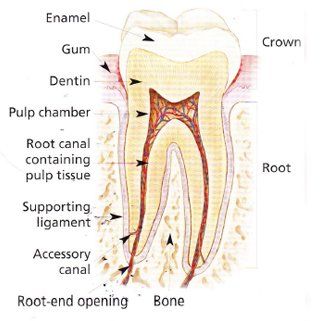
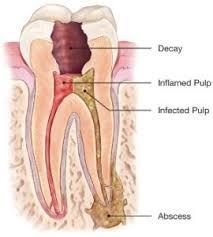
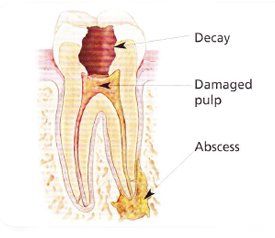
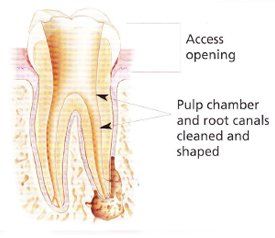
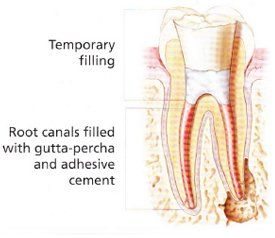
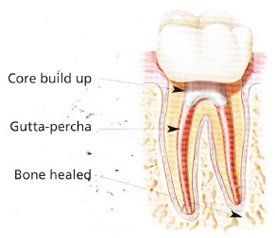
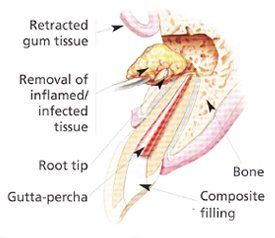


Share On: